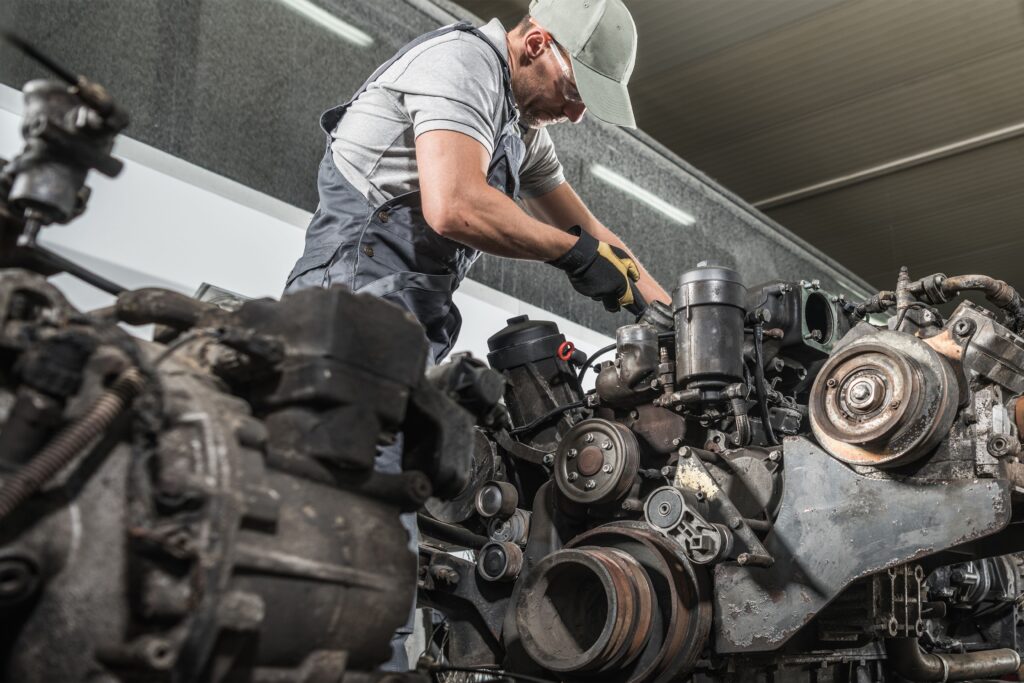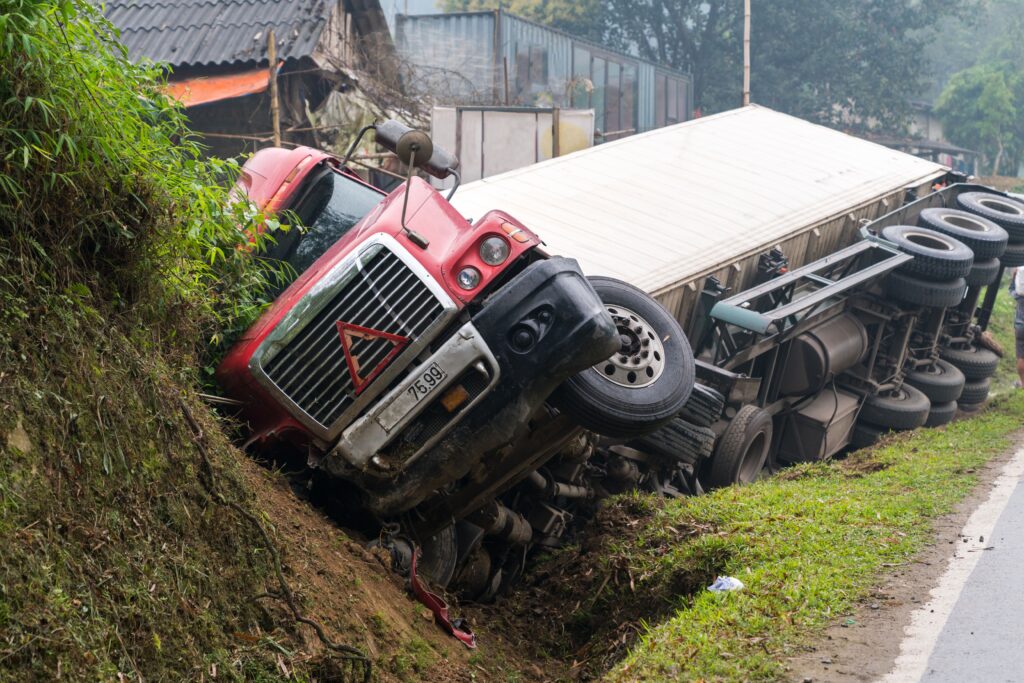
In the bustling panorama of commerce and industry, freight transportation plays a pivotal role, serving as the lifeblood that keeps supply chains pulsating with vitality. Central to this complex network are trucking companies, tirelessly facilitating the incessant flow of goods across vast expanses. However, a critical facet that demands our attention is the paramount importance of safety within this dynamic sector.
The significance cannot be overstressed; it’s a matter not only of safeguarding valuable cargo but more essentially the lives of those who traverse our highways daily. It is thus incumbent upon these institutions to construct robust safety plans that serve to mitigate risk and foster a culture imbued with an unwavering commitment to safety.
In broaching the topic of safety in this industry, one must first consider the intricate regulatory landscape within which these companies operate. The trucking industry is decidedly beholden to an array of regulations designed to ensure safety standards are upheld unfalteringly.
These standards, enforced by bodies such as the Federal Motor Carrier Safety Administration (FMCSA), create a framework which shapes operational procedures while providing crucial guidelines for developing company-wide safety policies. The terrain may seem daunting for those unfamiliar, but rest assured it is navigable granted one possesses clear understanding and respect for its complexities.
For trucking companies aspiring towards exemplary performance in terms of safety, recognizing these regulations isn’t merely about compliance or avoiding penalties; rather it’s about embracing their underlying purpose – fostering operational integrity while protecting personnel and public alike from potential hazards inherent within this vital field. The aforementioned topics provide us with an initial compass bearing as we embark on an exploration into creating comprehensive Safety Plans for Trucking Companies; however, they are only starting points in what promises to be a richly detailed journey ahead.
Importance of Safety Plans in the Trucking Industry

The profound significance of safety within the trucking industry cannot be underestimated. Every day, countless lives depend on the meticulous adherence to safety protocols by these giants on the road.
With freight trucks moving approximately 71% of all cargo in America, according to the American Trucking Association, they are undeniably an integral part of our nation’s economy. However, this vast movement of goods simultaneously presents numerous opportunities for accidents and mishaps.
The Federal Motor Carrier Safety Administration reports that there were roughly 414,000 police-reported crashes involving large trucks in a single year. Therefore, safety in this sector isn’t just about protecting assets and avoiding business disruption—it’s a matter of life and death.
The regulatory landscape surrounding trucking safety is another compelling reason why it demands attention. Safety standards are not merely guidelines but legal obligations that every company must meet.
The Federal Motor Carrier Safety Administration (FMCSA), Occupational Safety and Health Administration (OSHA), Department of Transportation (DOT), among others all have specific rules governing various aspects of trucking operations from driver hours-of-service to vehicle maintenance requirements. Non-compliance can result in severe financial penalties or even cessation of operations.
Understanding these risks is the first step towards mitigating them effectively. Identifying common hazards such as weather conditions and driving challenges forms a fundamental part of any robust safety plan in trucking companies.
Inclement weather exacerbates road risks; rain can make roads slippery while snow can obscure vision and make it difficult for vehicles to maneuver safely. Road conditions also pose substantial threats to truck drivers’ safety: uneven surfaces, potholes, sudden turns, lack or improper placement of road signs—all these factors can lead to monumental accidents if not addressed promptly.
Moreover, construction zones present unique hazards: unexpected route changes or detours, slow-moving heavy machinery on the road can catch drivers off-guard leading to collisions. Vehicle maintenance issues are yet another significant hazard associated with truck driving.
A truck with faulty brakes or non-functioning signal lights, for instance, is a disaster waiting to happen. Regular inspection and preventive maintenance of vehicles are crucial to ensure that they are roadworthy and pose minimal risk to their drivers as well as other road users.
Analyzing accident data allows trucking companies to gain valuable insights into the common causes of accidents in their operations and the industry at large. It offers them a chance to learn from past mistakes and prevent future incidents by tightening safety protocols, training drivers better, or investing in advanced safety technologies.
Safety should also come from oneself, so be sure to check out our post about trucker health: Fueling Health: Road-Ready Tips for Truckers Healthy Eating!
Regulatory Landscape

The landscape of safety standards in the trucking industry is vast and multifaceted, constantly evolving to incorporate advancements in technology and address emerging risks. The primary regulatory body that governs these standards is the Federal Motor Carrier Safety Administration (FMCSA). The FMCSA was established with the mission to reduce crashes, injuries, and fatalities involving large trucks and buses.
To achieve this mission, they have developed an extensive array of regulations that encompass all aspects of commercial vehicle operation. The FMCSA’s regulations cover issues ranging from driver health requirements to vehicle maintenance, providing a comprehensive framework for safe trucking operations.
One such regulation stipulates rigorous safety examinations for drivers before granting CDL licenses. These evaluations assess an individual’s physical ability to operate a commercial vehicle safely.
Underpinning these numerous regulations are detailed provisions concerning vehicle maintenance. These guidelines are designed to ensure that all trucks on the road are consistently maintained to a high standard of functionality.
They include requirements for regular inspections, repair protocols, and detailed record-keeping procedures that document any work performed on a vehicle. In addition to these broad categories of regulations, there are also highly specific rules covering areas such as hazardous materials transportation and maximum allowable drive times for drivers.
Each rule contributes towards creating an environment where safety is paramount, while also enabling smooth transportation operations. Compliance with these various regulations is enforced by random roadside checks carried out by state-based inspectors who have been trained under the Commercial Vehicle Safety Alliance (CVSA) program.
Violating companies may face hefty fines or even license suspensions if non-compliance issues persist. Yet importantly, it’s crucial to mention that updates or additions to existing rules aren’t uncommon in this fast-paced industry landscape driven by technological advancement and changes in societal norms pertaining to environmental conservation and labor rights among others – thus making it essential for firms operating within this domain stay current on regulatory changes so as not fall foul compliance mandates while also ensuring the safety and well-being of their workforce.
Understanding the Risks

The perils that pervade the trucking industry are manifold and multifarious, making an understanding of these risks an essential precursor to devising effective safety strategies. At the very heart of this task lies the need to identify common hazards.
Predominantly, weather conditions stand as formidable opponents to road safety. Torrential downpours can shroud windshields in a veil of relentless rain, transforming highways into slick and treacherous paths.
Ice-sheathed roads can send vehicles skidding uncontrollably, while fog can obscure visibility to a perilous degree. Additionally, driving challenges posed by high winds or blizzards are equally critical factors that demand constant vigilance.
Beyond natural elements, man-made hurdles such as road conditions and construction zones contribute significantly to potential hazards. Potholes or other damage to the road surface may not be immediately evident but can cause severe damage or accidents when encountered at high speeds.
Construction zones also pose specific risks due to changes in traffic patterns, decreased lane widths, and the presence of workers and equipment near active traffic lanes. Yet another layer of risk resides in vehicle maintenance issues.
A truck’s mechanical integrity is paramount for its safe operation on open roads – poorly maintained brakes can fail; worn tires might rupture; defective lighting renders trucks nearly invisible in low-light conditions; underinflated tires increase rolling resistance leading to overheating and potential blowouts – all these translate into grave safety concerns. Parallelly crucial is analyzing accident data which provides invaluable insights into trends and patterns associated with truck-related incidents.
This involves a thorough examination of available statistics on trucking accidents: their frequency, types – like jackknife or rollover accidents – along with their severity levels ranging from negligible damage to fatal outcomes. To understand the common causes behind these accidents more fully necessitates dissecting each incident meticulously: Was distracted driving involved?
Were speed limits breached? How major a factor was driver fatigue?
By answering these questions, we can uncover patterns that might otherwise remain hidden. Such comprehensive analyses, in turn, illumine the roadmap for implementing targeted safety measures – a pivotal step in mitigating risks and promoting a safer trucking environment.
Identifying Common Hazards

In the realm of trucking, hazards are a relentless presence that demands constant vigilance. Among the most prevalent challenges are weather conditions and driving challenges. Heavy rain, snowfall, icy roads, foggy visibility and extreme temperatures can dramatically amplify the risk factor inherent in every journey. These uncontrollable factors necessitate not just skillful handling of heavy-duty trucks but also a deeply ingrained understanding of how various weather phenomena can affect road grip, braking distances and overall vehicle control.
Equally significant is the need to be aware of road conditions and construction zones. Unmarked speed bumps or potholes, misaligned lanes or sudden constrictions due to construction work can exacerbate risk levels exponentially.
A seasoned trucker knows that an innocuous-looking puddle could be hiding a wheel-wrecking pothole beneath its surface; they understand that an abrupt lane shift in a construction zone needs to be negotiated with utmost caution. The third prominent hazard pertains to vehicle maintenance issues – from faulty brakes, worn out tires or damaged suspensions to defective lighting systems and steering issues – poorly maintained vehicles present significant risks on the roadways.
Sometimes these problems may not manifest immediately but may cause catastrophic failures when least expected. Even minor oversights such as improperly secured cargo can lead to disastrous outcomes during transit.
In essence, identifying common hazards in the trucking industry entails understanding both natural elements and man-made variables that can compromise safety on highways across the nation. The first step toward mitigating these risks begins with acknowledging their existence and potential impact on daily operations.
Weather Conditions and Driving Challenges

Weather conditions pose a significant challenge when it comes to the trucking industry. An understanding of how different climates can impact road safety is integral to managing these risks effectively.
For instance, inclement weather like heavy rainfall, snowstorms, and hail could reduce visibility, making road navigation perilous for drivers. Additionally, such weather conditions often make the roads slick and treacherous, raising the possibility of skidding and losing control of the vehicle.
In certain areas where extreme temperatures are experienced, heatwaves can lead to tire blowouts due to expansion from excessive heat while frost heaves in colder regions create unexpected bumps that can be disastrous at high speeds. Driving challenges related to weather are not limited solely to handling the vehicle under adverse conditions; they also encompass decision-making skills such as knowing when it is safe to proceed or when it’s best to pull over until conditions improve.
This requires a comprehensive understanding of how different weather types affect driving dynamics. The driver must be familiar with various control techniques like steering into a skid or maintaining an appropriate following distance in foggy conditions.
Moreover, these challenges underscore the importance of providing drivers with up-to-date weather forecasts and real-time updates along their routes—allowing them ample time for route planning and schedule adjustments as needed. Technological tools such as GPS systems integrated with meteorological data can serve this purpose efficiently, providing interactive maps that highlight areas prone to adverse climatic changes.
Notably though, technology is no substitute for human judgment—the ability to interpret and respond appropriately under fluctuating climatic situations underscores the need for rigorous training on coping strategies under diverse weather scenarios. Henceforth, integrating theoretical knowledge about potential hazards with practical training on handling emergencies could form an essential part of any trucking company’s safety plan.
Road Conditions and Construction Zones

Navigating the tumultuous terrain of the open road poses a significant challenge for truck drivers and underscores the paramount importance of understanding and preparing for varying road conditions. The capricious nature of these conditions can range from uncomplicated straightaways to winding, narrow passages that demand precision and focus. Additionally, external factors such as precipitous weather can further complicate these already intricate passages, amplifying their difficulties exponentially.
Consequently, trucking companies must incorporate rigorous training programs that equip drivers with strategies to tackle these obstacles efficiently and safely. Education on defensive driving techniques, awareness of blind spots, maintaining safe following distances, managing speed according to traffic flow and weather changes – all play a vital role in mitigating risks posed by varying road conditions.
As taxing as negotiating diverse road conditions can be on drivers, maneuvering through construction zones introduces an entirely new dimension of complexity. While beneficial for long-term infrastructural development and safety enhancements, construction zones often involve sudden changes in traffic patterns, presence of workers near the roadway, temporary signs or barriers which may or may not be clearly visible at all times.
Henceforth it is incumbent upon trucking companies to ensure that their drivers are adept at identifying signs indicative of upcoming construction zones. This knowledge allows them adequate time for preparation which could involve reducing speed or changing lanes in advance thereby minimizing potential disruption or accidents in these zones.
Regular updates about major ongoing construction projects across common routes can be provided through dispatch teams or fleet management software systems ensuring real-time information flow among all stakeholders involved. While navigating varied road conditions and construction zones presents a formidable hurdle to safety practices within the trucking industry; with comprehensive training programs focusing on enhancing situational awareness along with real-time data sharing mechanisms – these challenges can be addressed effectively thereby contributing substantially towards creating safer highways.
Vehicle Maintenance Issues

Vehicle maintenance issues undoubtedly constitute a formidable hazard in the trucking industry. Ensuring that these mechanical titans are kept in peak operating condition is pivotal, not only for the safety of the drivers but also for other motorists sharing the roadways. A lackadaisical approach to maintenance can result in catastrophic failures, leading to accidents that could have been avoided with due vigilance.
When discussing vehicle maintenance issues, one cannot ignore the adverse impact of overlooked routine inspections on vehicle components such as brakes, tires, lights, and steering mechanisms. The criticality of these components demands their optimal performance at all times.
An out-of-service brake or an underinflated tire can drastically impair a driver’s ability to respond effectively to unexpected situations on the road thereby turning an otherwise manageable situation into a fatal catastrophe. Moreover, ensuring a reliable and functional engine is crucial in preventing unexpected breakdowns during transit.
A regular check on leakages and fluid levels can nip potential problems in the bud. Employing preventive measures like oil changes at prescribed intervals and scheduled servicing can significantly extend engine life while reducing roadside emergencies.
It’s essential to consider how auxiliary systems like HVAC (heating, ventilation and air conditioning) units contribute towards driver comfort and safety indirectly by maintaining good cabin conditions which helps keep the driver alert during long hauls. Malfunctions such as sudden loss of heating during winter transport can not only affect a driver’s health but also compromise their capacity to operate safely on potentially icy roads.
Indeed, no stone must be left unturned when conducting vehicle maintenance checks; from wiper blades to transmission fluid levels—each detail carries weight for operational safety within this industry sector. In doing so we are not only ensuring smoother operations but also fostering an environment where risk mitigation becomes second nature to our practices which contributes directly towards minimizing accidents arising from preventable technical malfunctions.
Analyzing Accident Data

In the trucking industry, the importance of dissecting and interpreting accident data cannot be overstated. The analysis of this critical information serves as a cornerstone in the formation of comprehensive safety plans. It equips companies with the knowledge they need to protect their drivers and to mitigate risks, thereby reducing high-cost incidents and potential liability.
Investigating accident statistics across the industry is an enlightening first step in this process. By comparing a company’s record against national or even global figures, organizations can gauge where they stand relative to industry averages.
This external benchmarking helps pinpoint if a company’s performance aligns with or strays from typical trends observed among peers in truck transportation. Moreover, these figures can be invaluable when interacting with external entities such as regulators or insurers, providing concrete data that informs negotiations or regulatory compliance efforts.
When it comes to identifying common causes of accidents, rigorous analysis reveals patterns that might otherwise remain hidden. Collisions could arise due to an array of factors—driver fatigue, equipment failure, poor road conditions or weather challenges are just a few potential culprits.
Each incident offers insights that can shape training programs and preventative measures. For instance, if driver fatigue emerges as a recurrent issue in accident reports, companies may choose to bolster their adherence to hours-of-service rules and invest more heavily in rest facilities for their drivers.
In essence, mining accident data provides trucking companies with invaluable insights that guide them on how best to prioritize resources for safety initiatives. By recognizing patterns and trends within these hard numbers — from broad statistical overviews down to granular fault analyses — trucking firms gain the power not only to react effectively when incidents do occur but also predict where issues may arise in future operations.
Common Causes of Accidents

Understanding the root causes of trucking accidents is a complex task, necessitating an examination of multifaceted variables and various circumstantial factors. Foremost among these are driver errors, which can range from lack of concentration and distraction to reckless driving behaviors such as overspeeding, making abrupt lane changes, or disregarding traffic conditions. The ubiquity of mobile devices poses a significant challenge, as distracted driving due to texting or calling has become increasingly prevalent.
Another salient cause is fatigue. Long hours on the road often lead to drowsy driving—a condition as hazardous as drunk driving.
The monotonous nature of highway driving combined with inadequate rest periods can significantly impair a driver’s ability to make sound judgments and react promptly in critical situations. Vehicle-related issues also contribute notably toward accidents.
Poor vehicle maintenance can lead to sudden equipment failure during transit which could result in catastrophic accidents. Brake failures, tire blowouts, steering mechanism failures are just some examples that underscore the importance of regular and rigorous vehicle maintenance.
Furthermore, shifting weather conditions pose significant hurdles for truck drivers who are often caught unawares by sudden fog, heavy rain, or snowstorms which affect visibility and traction on the road surface. Inadequate training in handling these inclement weather scenarios could exacerbate this issue.
Yet importantly are cargo-related incidents arising from improper loading practices that can lead to imbalanced vehicles susceptible to rollovers or unanticipated shifts in cargo mid-journey that can disrupt balance leading to loss of control over the vehicle. Evidently understanding these common causes requires concerted efforts towards mitigation strategies aimed at preventing such mishaps; subsequent sections provide insights on how this understanding informs robust safety policy development for trucking companies.
Developing a Comprehensive Safety Policy

Crafting a clear and comprehensive safety policy is instrumental in fostering a culture of safety within a trucking company. This policy should serve as the backbone of all operations, creating a uniform approach to ensuring safety on the road.
It demands careful articulation, extending from the management’s vision and commitment to protecting their drivers, other motorists, pedestrians, and the fleet itself. The policy should encapsulate not just reactive measures but also proactive steps in averting potential risks or hazards.
Involving stakeholders in the development of this safety policy is paramount for its successful integration into daily operations. Key stakeholders include not only executives who will oversee its implementation but also drivers who are at the forefront of these implementations.
Their insights will be invaluable; they can provide perspectives stemming from firsthand experience that might otherwise be overlooked by those detached from ground operations. Additionally, including drivers in this process can yield greater buy-in and compliance with the policy once it is rolled out.
The hallmark of an effective safety policy lies not only in its conception but also its evolution over time through a continuous improvement model. A static policy will fail to adapt to changing circumstances – new technologies, updated regulations or emerging trends within the industry – rendering it ineffective or obsolete over time.
Therefore, an iterative process that regularly reviews and revises parts of the plan is necessary to ensure that it remains current and effective. Each component aligns into one purpose – reducing risks on both sides: preventing accidents for truckers while safeguarding public road users’ lives as well.
Driver Training Programs

Unquestionably, an effective safety plan is incomplete without a comprehensive driver training program. The paramount significance of rigorous training in crafting proficient drivers and ensuring road safety cannot be overstated. It starts with selecting individuals who showcase not only the requisite driving skills but also the patience and concentration essential for the profession.
Inculcating defensive driving techniques forms the fulcrum of such training programs. These tactics serve as a shield, safeguarding drivers against unpredictable actions or decisions made by others on the road.
They encompass maintaining appropriate following distance, understanding blind spots, adjusting speed according to road and weather conditions, and developing situational awareness. An aspect that mandates special attention during these programs is adherence to Hours of Service Regulations.
Drivers must be educated about these norms outlined by Federal Motor Carrier Safety Administration (FMCSA), which dictate how long they are allowed to operate before taking mandatory rest breaks. Ensuring compliance not only promotes safety by combating fatigue but also prevents legal repercussions.
The content and delivery of these programs should be periodically evaluated and updated based on technological advancements, changes in regulations, accident data analysis and feedback from drivers themselves – thereby encapsulating a continuous improvement model into driver training programs. In essence, these efforts aim to foster an environment where safety becomes second nature to every individual navigating behind the wheel.










